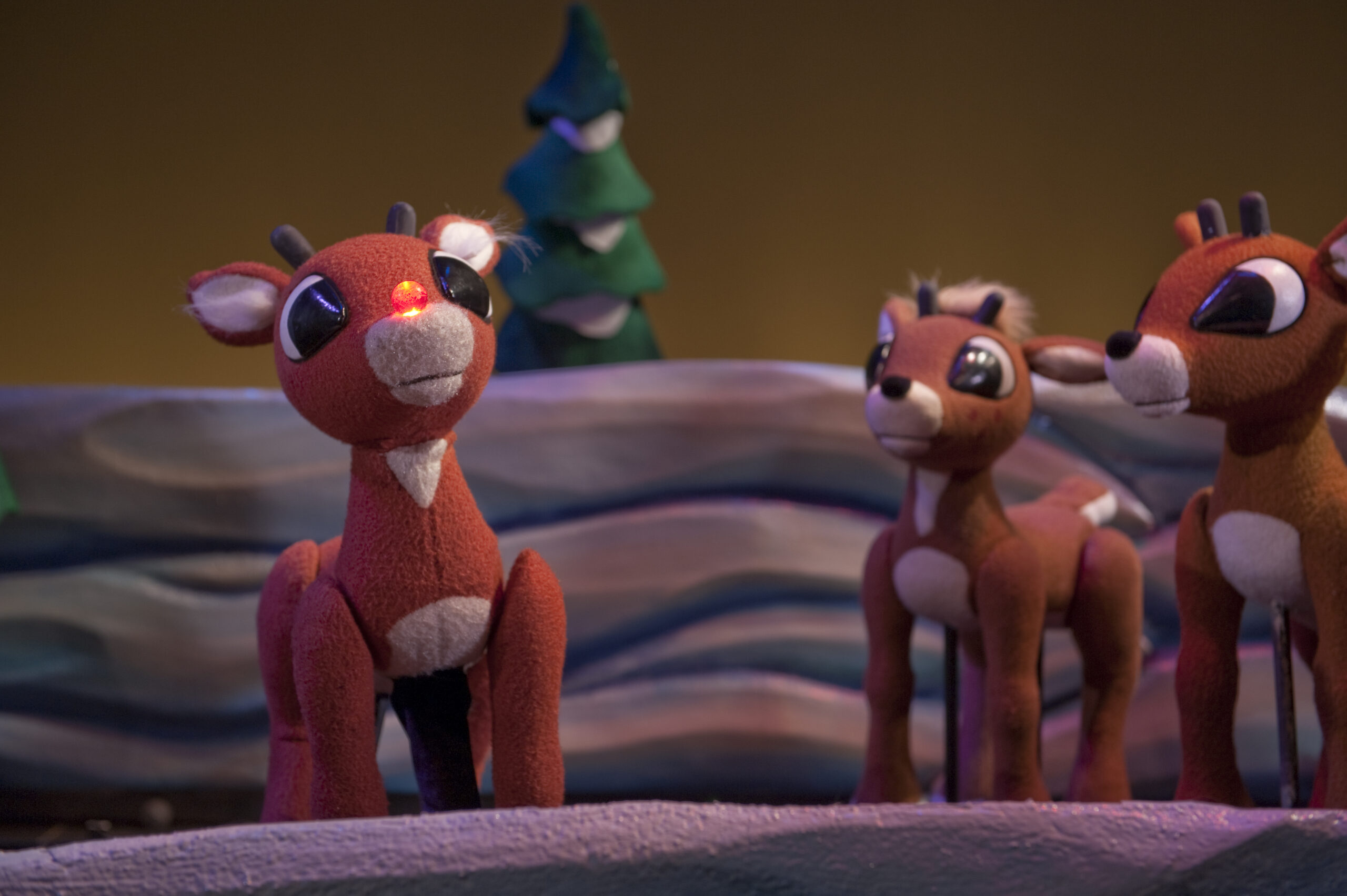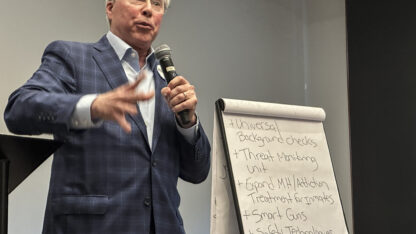‘Christmas Town: The Story Behind the Story of Rudolph’ on view at Center For Puppetry Arts

Young Rudolph with Red Nose from “Rudolph the Red-Nosed Reindeer.”
Clay Walker
The first time America got to know the beloved character Rudolph the Red-Nosed Reindeer might be more recent than you think. The misfit reindeer entered popular consciousness with his national TV debut in 1964 in “Rudolph the Red-Nosed Reindeer,” the groundbreaking animated claymation special. Now, the Center for Puppetry Arts shares Rudolph’s origin story and behind-the-scenes in an exhibition called “Christmas Town: The Story Behind the Story of Rudolph,” a companion experience to their annual puppet show based on the original TV animation. Center for Puppetry Arts Museum Director Sarah Dylla and puppeteer Anna Williford joined “City Lights” host Lois Reitzes to share some new insights visitors can discover about this classic holiday tale.
Interview highlights:
The unexpected origins of beloved Christmas icons:
“We don’t often think about our favorite holiday characters as having an origin story. They just, kind of, are there,” said Dylla. “They’re there every year on your ugly sweater or at your grocery store over the radio, but Rudolph as a character was actually born in the late 1930s as part of a project to create a give-away book for the holidays for children, that the [Montgomery Ward] department store would give away every year.”
“That book was written by Robert May, who worked for their advertising team, and he worked very hard throughout the whole year on this story of Rudolph, who was a character that ended up having a lot of personal meaning to him,” Dylla explained, “Because it was the year that his wife was very sick and passed away, and the story became a kind of coping mechanism for him and his daughter.”
“It’s funny because so many of our Christmas creators actually are Jewish. And so this story of the founding of, or the creation of Rudolph, brings together a lot of Jewish history in the creation of popular culture for Christmas. And so also, Johnny Marks, the songwriter, who was the brother-in-law of Robert May, married into this ‘Rudolph family’ and took it on himself as well. Johnny Marks was a Jewish man and a very successful songwriter who wrote so many of our Christmas classics.”
What to expect at the Center’s 11th annual performance of ‘Rudolph’:
“The entire production is the exact replica of the Rankin and Bass claymation special that so many people know and love, and the script is the same, the characters the same, and the puppets were actually modeled completely after the claymation special. So every single detail was approved and went through an entire screening process to make sure that they have the joy, and the look and every part of them bring the same energy as the Rankin and Bass special.”
“I play the character of Rudolph, and I also play Mrs. Claus, also known as ‘Momma,’ and then a few characters here and there,” said Williford. “There are six of us puppeteers, and there are almost one hundred individual puppets, including all of our puppet props that we have, and we’re managing all of them. We do all of the puppetry; we do all of the voices, we do all of the singing live; everything is completely live.”
“We always joke that two shows are going on at the same time. There’s the show above the playboard that all of the audience gets to see, and then there’s the show under the playboard where there’s all of us doing this intricate dance and our own choreography on these little rolling carts, so we can all move around and get to where we need to be and continue the scene,” Williford said. “It’s fascinating.”
The museum exhibition celebrating Santa’s most famous reindeer:
“The exhibition is this look into the history of where the Rudolph story came from, so I often like to say it’s an easy three-part history. The first part is the Montgomery Ward book, and then through marriage, Johnny Marks comes into the equation, and then there’s the song that we all know,” said Dylla. “Then the third part is where we get into the source material for the theater production that we do. It’s that 1964 stop-motion puppetry “Rudolph, the Red-nosed Reindeer” that’s produced by Rankin and Bass.”
“This exhibition is really built, of course, to show this context behind this very familiar character, but also really, to spotlight these two amazing puppets that we are able to have on long-term loan at the Center from an anonymous, generous donor, and they are the Santa and Rudolph – a young Rudolph – from that production, which was created by the Rankin and Bass production company,” Dylla said. “It gives you that behind-the-scenes peek at how these types of productions work while also learning some great pop culture.”
The Center for Puppetry Arts performs “Rudolph the Red-Nosed Reindeer” alongside their museum exhibition “Christmas Town” from Nov. 10, 2021, through January 2, 2022. Tickets and more information are available at https://puppet.org/programs/rudolph-the-red-nosed-reindeer/.





